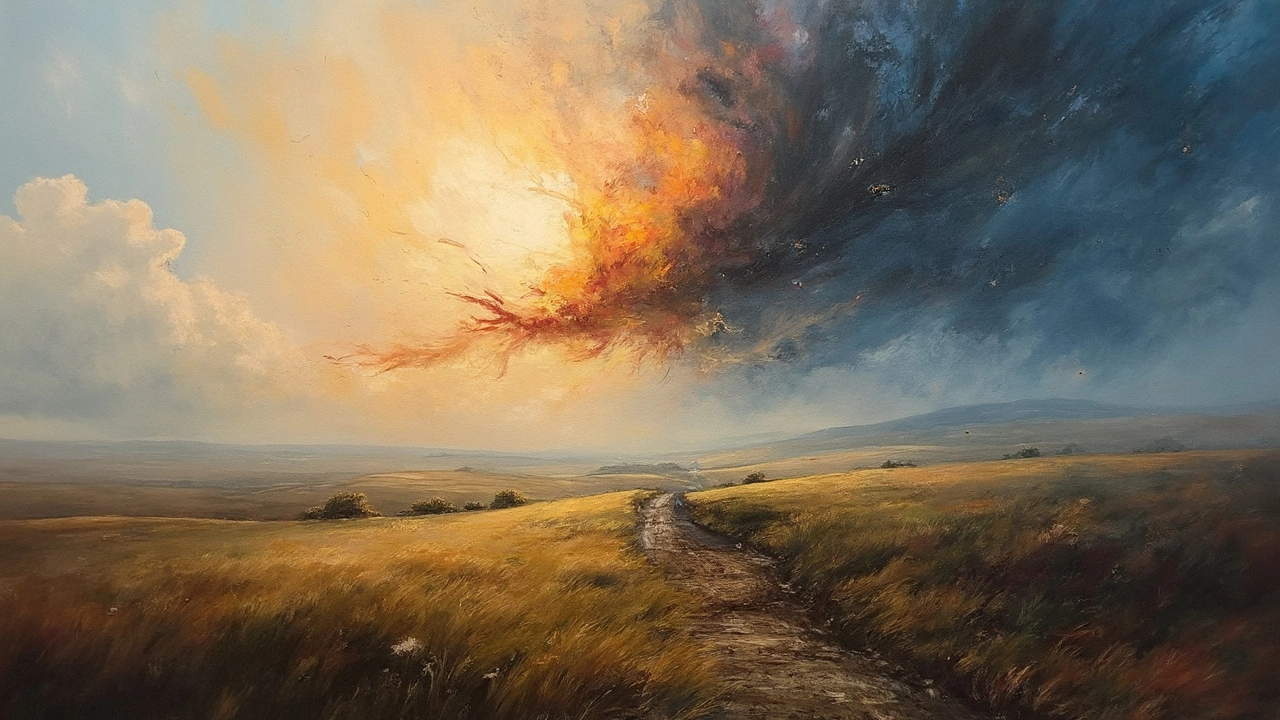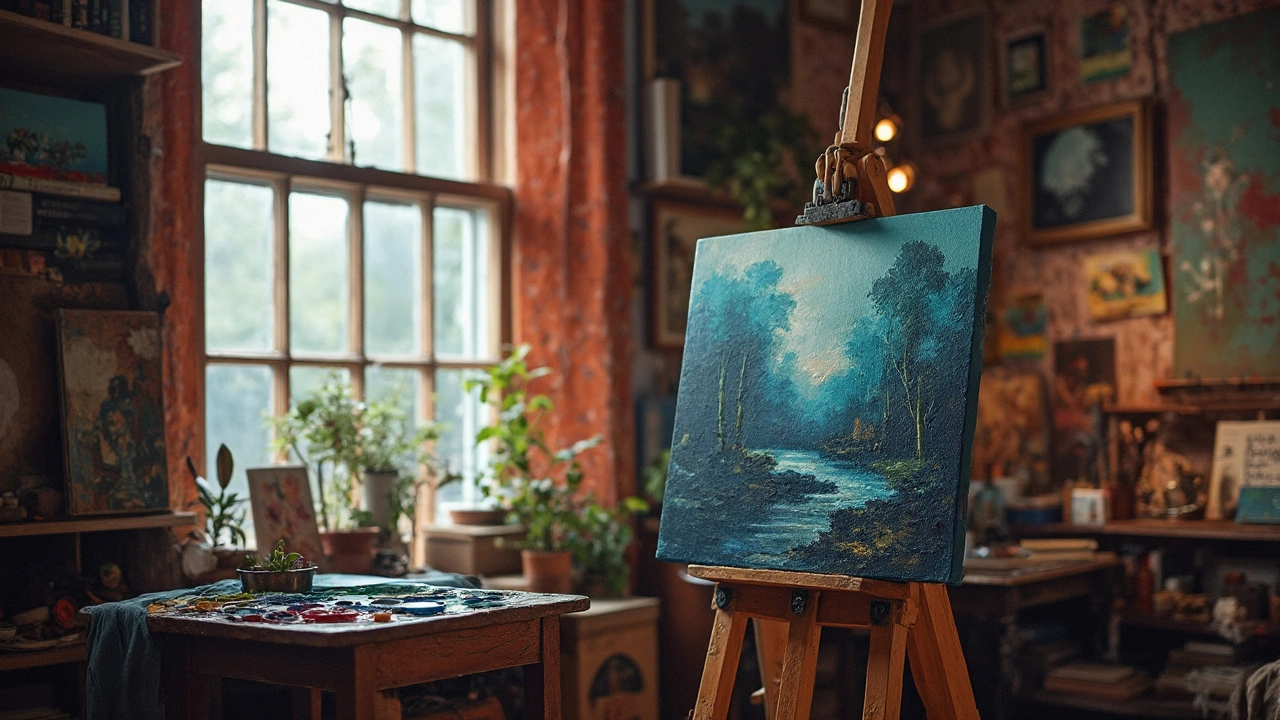Jumping into oil painting can be both thrilling and puzzling. One of the first big questions you'll bump into is whether to kick off your masterpiece by laying down dark colors or light ones. It's not just a matter of preference; this choice can really set the tone and depth of your entire piece.
Many folks start with darker colors to gradually layer in the lights, a technique that's awesome for setting a strong contrast and creating depth. It's popular among artists who love that dramatic flair and bold shadows. However, if you're more into those subtle transitions and a softer vibe, starting light might be your jam. It gives you a blank canvas to gradually build up tones, keeping things fresh and airy.
No matter which route you pick, understanding the ins and outs of these approaches can totally streamline your painting adventure. Plus, knowing a smidge about famous artists’ strategies doesn't hurt either! Let's explore what's best for you, making every brushstroke count.
- The Debate: Dark or Light First?
- Benefits of Starting with Dark Colors
- Advantages of Beginning with Light Colors
- Techniques to Try for Both Approaches
- Expert Tips for Finding Your Style
The Debate: Dark or Light First?
Every budding oil painter eventually confronts the big question: should you start your painting with dark colors or go for the light? It's not just a whimsical choice; this decision can totally change how your painting develops and feels.
Let's look at the dark-first approach. Many artists swear by starting with dark shades as it provides a solid base for building up lighter tones. It's like laying the groundwork for those shadows and depths that bring a painting to life. Plus, working from dark to light can make it easier to handle shadows and cool tones. As renowned artist John Carlson once said,
"In every picture, the darkest color should be laid in first."
But what about starting with light colors? Well, this method gives you a nice, fresh perspective. Starting light allows you to gently layer colors, adding depth gradually. This approach often suits painters who cherish a softer look in their work, and it provides flexibility if you're the type who likes to tweak things as you go. Some painters say it feels less daunting to cover white canvas with light washes first. And hey, who doesn’t love options?
| Approach | Best for | Popular Among |
|---|---|---|
| Dark First | Strong contrasts | Landscape painters |
| Light First | Soft transitions | Portrait artists |
In the end, whether you're team dark or team light, experimenting is key. Try both styles to see which one brings out your artistic flair. After all, it's all about finding what clicks with your creative process. So grab your brushes and get ready to explore!
Benefits of Starting with Dark Colors
Diving into an oil painting by starting with dark colors can give your artwork a powerful foundation. Think of it like laying down the bass in a song before adding the melody. It's the backbone that supports everything else.
One major perk of this technique is the way it helps in creating contrast. Having those bold darks in place means your lighter tones can pop even more. Say you’re painting a sunset; by setting those deep twilight shades first, the softer hues of the sun look extra vivid against them.
This method also makes it easier to visualize the overall structure of your piece. With shadows and darker elements in the mix from the get-go, it’s like sculpting in reverse—the dimensions just click into place. Plus, for those moments when blending and depth are key, starting dark can make transitions smoother.
Another cool thing? It’s forgiving! If you’re not thrilled with a detail, those rich shades let you cover mistakes. It’s a bit like hitting an artistic undo button.
Here are a few reasons artists love this approach:
- Volume and Depth: You can create a 3D effect effortlessly, adding more life to your painting.
- Contrasting Elements: The highlights stand out better, making your work visually compelling.
- Confidence Booster: It's easier to refine and correct at later stages.
While this approach might not be everyone's go-to, understanding the oil painting techniques that work best for you is a game-changer. It’s all about finding that sweet spot where you feel most comfortable and creative!

Advantages of Beginning with Light Colors
Starting your oil painting journey with light colors has its own perks, especially if you're aiming for a delicate and subtle look. When you begin with a light base, it acts like a soft foundation, allowing you to gradually build depth without rushing into heavy contrasts.
One massive plus of going light first is the flexibility it offers. Light colors can easily be covered or adjusted, making it forgiving for beginners who are still finding their rhythm. You can make that one stroke a little darker without a hitch if it ends up more intense than planned. See—it's like having a safety net!
Another benefit is the gradual transition. Working from light to dark helps create smooth gradients and blends, which is super handy for capturing skin tones or landscapes with misty atmospheres. Plus, lighter colors reflecting through the layers can add a certain glow to the painting. In artworks where brightness and freshness matter—like sunny portraits or gentle seascapes—this approach can be a game-changer.
Not to forget, starting with lighter shades supports the preservation of luminosity. This technique allows for more play with reflective light, bringing out the vibrancy without leaving your canvass muddy.
Here's a little strategy: use a light underpainting to sketch out your piece. Then gradually build up the shadows and contours. This method not only ensures you keep track of your composition but also offers the pleasure of seeing your work gently come to life as it transforms with each layer.
For those gearheads who love to learn by observing, many artists from the Impressionist era often favored lighter starts to capture fleeting moments and light effects. Gives you a brilliant historical backdrop and might just inspire you to try a light-first approach in your next oil painting project.
Techniques to Try for Both Approaches
Dipping your brush into the world of oil painting techniques can be a bit of an adventure. Whether you're starting with a moody dark base or a bright light canvas, there are plenty of methods to help bring your vision to life.
For those starting with dark colors, this means laying down the drama first. Many artists swear by this approach for its ability to highlight contrast effectively. Here’s a popular technique to try:
- Chiaroscuro: A classic approach where you start with dark layers, adding light gradually. This technique is known for its dramatic effect, often used by the old masters to create mood and highlight focal points.
- Scraping: Begin with a dark layer and use tools to scrape away and reveal lighter underlayers. This helps in creating texture and interest throughout the piece.
Now, for those who prefer to start on a lighter foot, it’s all about preserving that brightness and letting it shine through:
- Scumbling: A method of applying thin, light layers over a dry underpainting, allowing colors underneath to peek through. This brings a delicate, hazy quality to the work.
- Layering: Starting with light tints and gradually building up through layers offers a more controlled transition of tones. It’s perfect for capturing subtlety in your painting.
No matter which approach you lean towards, the key is experimentation. Try mixing and matching techniques. Sometimes a blend of starting with dark colors while using light layers as highlights can lead to captivating results.
Want to know which famous artists used these techniques? Imagine Leonardo da Vinci meticulously crafting shadows with chiaroscuro, or impressionists like Renoir capturing light with layered hues. These methods are timeless for a reason—give them a shot, and see your canvas transform.

Expert Tips for Finding Your Style
Finding your unique groove in oil painting is like discovering your own voice in a sea of echoes. It's about what colors make you buzz with excitement and what techniques feel as natural as breathing. Let’s explore some tips to help you carve out your artistic style.
First off, experiment with both starting with dark and light colors. Try tackling the darkness first on one canvas and see how it feels to sculpt the lights from that depth. Then, flip it and start with a light base on another piece. Keep a journal to jot down what you feel about each approach—this can lead to some eye-opening insights!
Check out the legends! Artists like Rembrandt often started with dark colors, using them to construct moody, shadowy atmospheres, while others like Claude Monet played with a lot of light tints to capture airy, soft impressions. Dive into their works for inspiration, not imitation.
Get feedback, but don't let it smother your instinct. Share your work with fellow artists or friends and soak in their thoughts. Often, a fresh pair of eyes can spot things you may have missed. But remember, this is your art; their opinions should guide you, not define you.
Consider dedicating space to an inspiration wall filled with elements that speak to you: colors, nature, textures, anything! This visual board can be your go-to when you're in a creative slump, reminding you of the vibes and themes you love.
Finally, create regularly. Like any other skill, finding your style in oil painting requires practice and persistence. Set small, manageable goals—maybe focusing on one oil painting technique a month—and embrace every creative stumble as a stepping stone.

